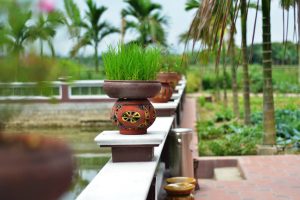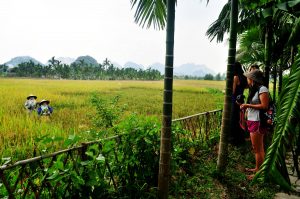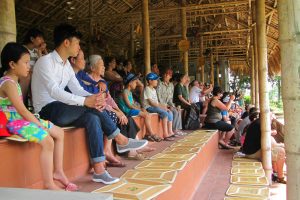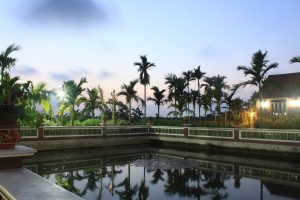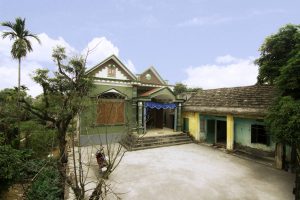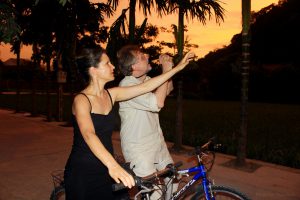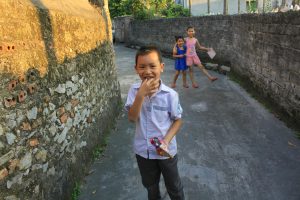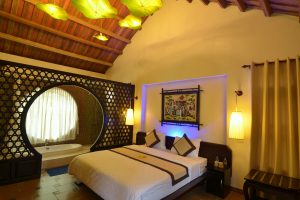Yen Duc is a tranquil village that blends the harmonious beauty of plains and hills, highlighted by its limestone mountains steeped in legend: Rice Stack Mountain, Cat Mountain, Mouse Mountain, v.v.
Local house and family village life
In the Vietnamese countryside, the construction of a family home has long been regarded as one of the three most significant life events, alongside the acquisition of a water buffalo and the celebration of marriage. This deep-rooted belief reflects the importance placed on having a stable and secure living environment, as a foundation for a successful career and prosperous future.
The traditional architecture of Vietnamese rural homes is intrinsically linked to the vibrant culture of the village. These dwellings are typically composed of the main house, side structures (such as the kitchen), a barn, a yard, a garden, a pond, and surrounding fences or walls. The main house is often divided into an odd number of sections (1, 3, or 5), and is oriented towards the south to take advantage of the sun’s warmth during the colder months and its cooling breezes in the summer.
In front of many homes, a semi-circular or circular pond can be found, reflecting the principles of Feng Shui. These ponds serve not only as a habitat for fish and snails but also as a hub for daily activities, such as clothes washing, vegetable cleaning, and dishwashing. The integration of these functional and aesthetic elements within the rural household exemplifies the deep-rooted connection between the built environment and the rhythms of village life.
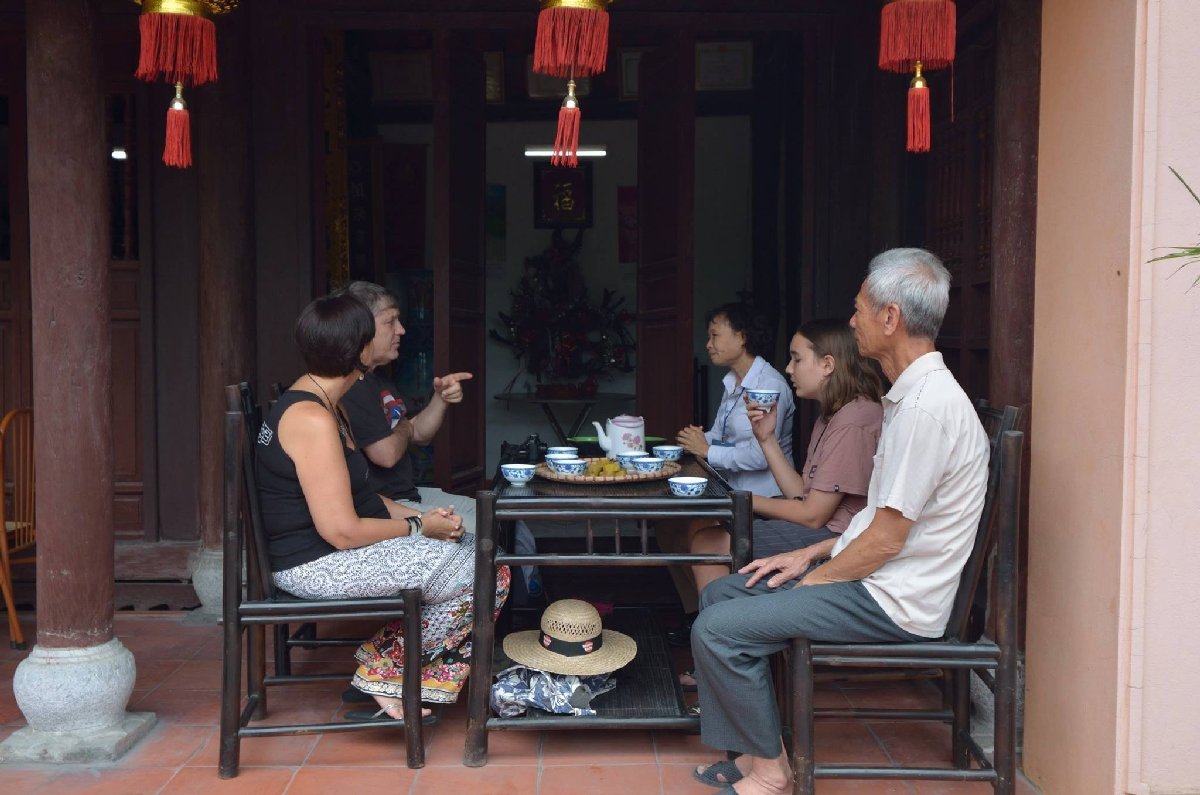 All houses have an ancestor altar. Ancestor worship beliefs – worshiping the death is very popular in Asia, especially in Southeast Asia nations and particularly in the Vietnamese and Chinese culture. For Vietnamese, it’s almost become a religion.
All houses have an ancestor altar. Ancestor worship beliefs – worshiping the death is very popular in Asia, especially in Southeast Asia nations and particularly in the Vietnamese and Chinese culture. For Vietnamese, it’s almost become a religion.
It is always a garden surrounded by areca row in front and banana at the behind; the house – the garden creating the village with its law as a unified community and life has existed for thousands of year’s history. Unlike the Western, Asian in general, and people in rural villages of Vietnam in particular tend to live three even four generations in the same house.In Vietnam village, it is easy to find items being made from things which are extremely familiar with normal life, such as: Areca fan; Coconut cup…
Each local house in Yen Duc village will provide you a nice experience to observe local life and family tradition, with a nice talking to warm hosts.
Yen Duc Village: A Tapestry of Vietnam’s Heroic History
Throughout the tumultuous history of Vietnam, the country has borne witness to countless battles and struggles for independence. From the forests and rivers to the cities and villages, the evidence of this heroic national narrative is etched into the very fabric of the land. Yen Duc Village, like many other communities across Vietnam, has played a significant role in this storied past.
Within the village, two iconic landmarks stand as a testament to the unwavering spirit of the Vietnamese people: Canh Mountain and the revered “73” Cave. The “73” Cave dates back to a heroic struggle, where 73 brave guerrilla fighters sacrificed their lives in the fight for the freedom of the people. This sacred site serves as a poignant reminder of the Vietnamese people’s unwavering commitment to protecting their homeland, no matter the cost.
Visitors to Yen Duc Village can trace the footsteps of these valiant individuals, traversing Canh Mountain and bearing witness to the “73” Cave. Here, they can listen to the stories passed down through generations, tales that celebrate the courage and resilience of the local people. In 1980, a memorial monument or grave was erected to honor the memory of these heroic guerrilla fighters and villagers who gave their lives in the defense of their homeland.
Yen Duc Village also boasts other historical relics, including connections to the illustrious Tran dynasty and the renowned Canh Huong Pagoda at the heart of the community. These sites further enrich the tapestry of Vietnam’s storied past, inviting visitors to immerse themselves in the rich cultural and historical legacy of this remarkable village.
Canh Huong pagoda
In rural Vietnam, pagoda is a source of culture, sacred places of worship, as well as location of the cultural activities. Visiting the pagoda brings you the tranquility of mind and a better understanding of Vietnamese traditional culture.
“Canh Huong” means beauty spot pagoda. The pagoda offers the visitor a chance to escape the busy streets and sample the atmosphere of rural Vietnam.
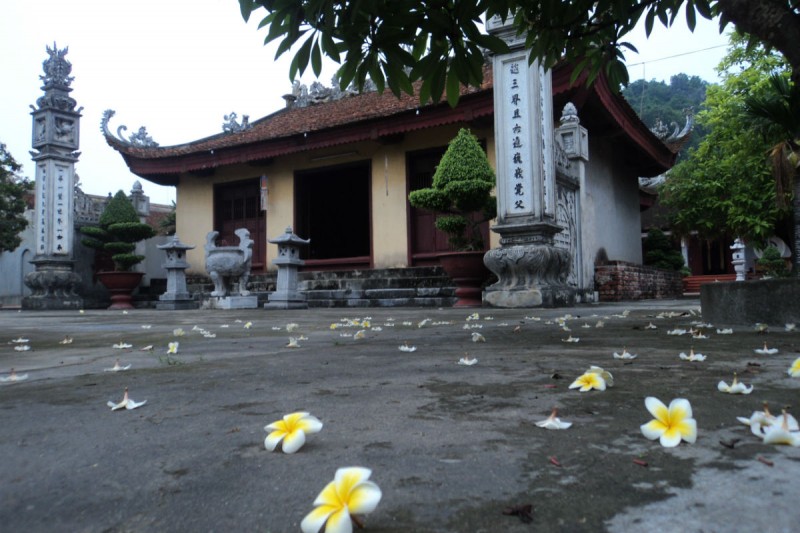
This is an ancient pagoda which was built under Tran dynasty (XIII-XIV century). The pagoda bears legendary stories of Vietnamese King Tran Nhan Tong leaving the court to follow a religious life. During his Buddhist life, he built a lot of pagodas near around this area. The pagoda has been destroyed and restored many times most substantially in 1664 a then again in the mid-19th century. However, these restorations retained the style of the original structure. Located in the center of the village, Canh Huong pagoda is a sacred place that every local villager comes to pray for the good health, good weather and safety and bumper crops.
Quan Ho singing and cultural life
Quan Ho folk song formed quite long ago by Viet people (Kinh people) in 49 Quan Ho villages and some other neighboring villages belong to Bac Giang and Bac Ninh province now created. Quan Ho singing is a Vietnamese folk music style characterized both by its antiphonal nature, with alternating groups of female and male singers issuing musical challenges and responses, and by the fact that most of the songs in the repertoire deal with topics of love and sentimentality experienced by young adults.
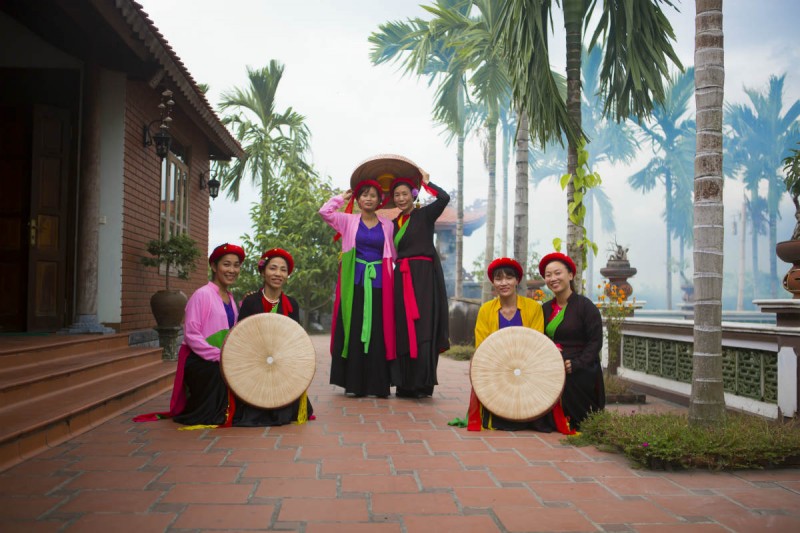
In Yen Duc village, Quan Ho folksong is a popular performance of villagers in the festivals, holiday or celebration day of village. The elders also organize the performance monthly as a cultural activity of the village. In the performance, people also present other folksongs as Cheo, dan ca… The cultural life of Yen Duc village is rich by contribution of all young and elderly villagers to preserve traditional culture and give lessons to children about love with the country, ancestor and family respecting.

